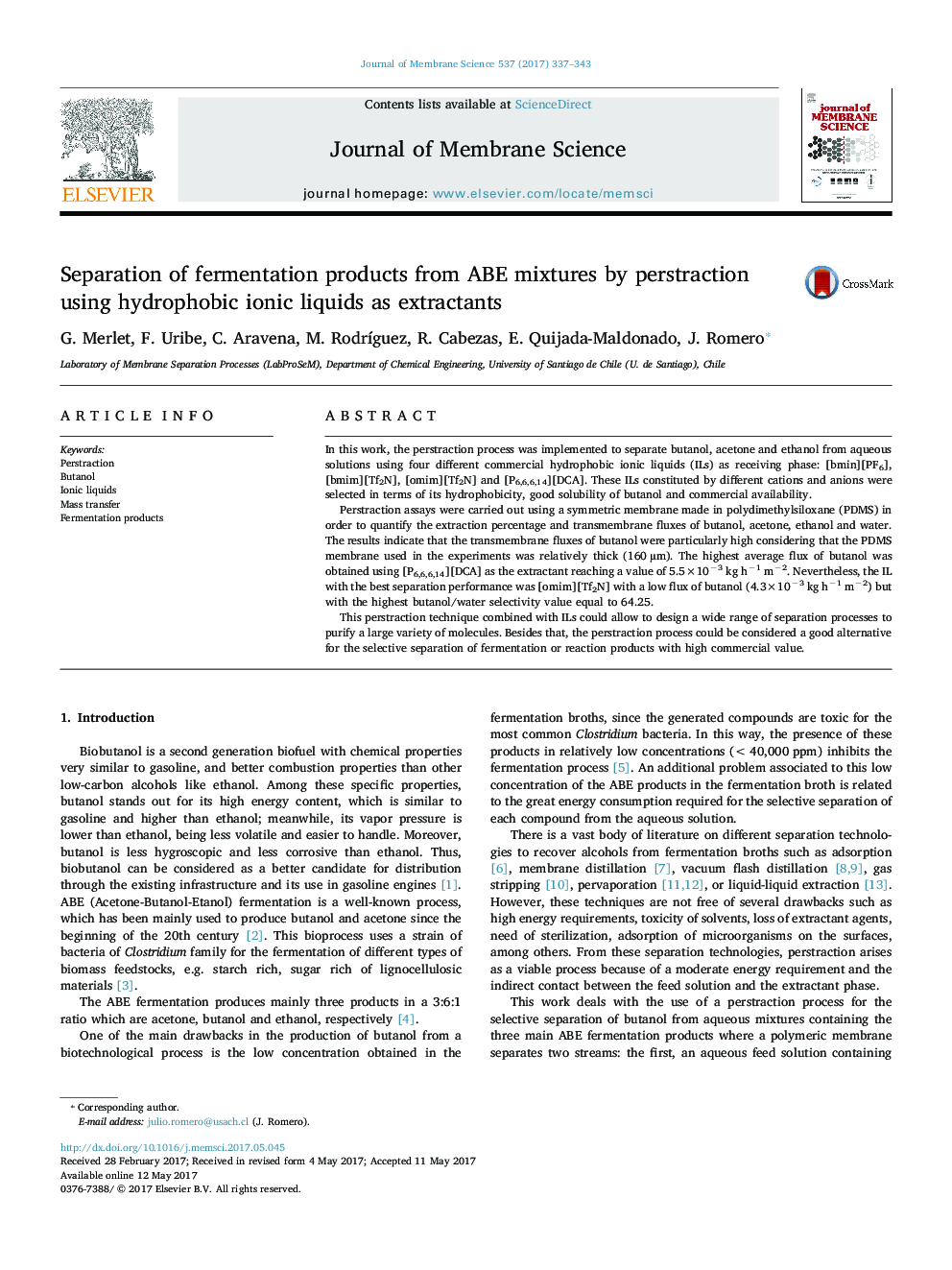| Article ID | Journal | Published Year | Pages | File Type |
|---|---|---|---|---|
| 4988843 | Journal of Membrane Science | 2017 | 7 Pages |
â¢ABE fermentation products were separated by perstraction.â¢Four different hydrophobic ionic liquids were used as extractants.â¢The PDMS membrane used in the experiments was the main mass transfer resistance.â¢Perstraction performance strongly depends on the selectivity to water.â¢[omim][Tf2N] was the tested IL with the highest butanol/water selectivity.
In this work, the perstraction process was implemented to separate butanol, acetone and ethanol from aqueous solutions using four different commercial hydrophobic ionic liquids (ILs) as receiving phase: [bmin][PF6], [bmim][Tf2N], [omim][Tf2N] and [P6,6,6,14][DCA]. These ILs constituted by different cations and anions were selected in terms of its hydrophobicity, good solubility of butanol and commercial availability.Perstraction assays were carried out using a symmetric membrane made in polydimethylsiloxane (PDMS) in order to quantify the extraction percentage and transmembrane fluxes of butanol, acetone, ethanol and water. The results indicate that the transmembrane fluxes of butanol were particularly high considering that the PDMS membrane used in the experiments was relatively thick (160 µm). The highest average flux of butanol was obtained using [P6,6,6,14][DCA] as the extractant reaching a value of 5.5Ã10â3 kg hâ1 mâ2. Nevertheless, the IL with the best separation performance was [omim][Tf2N] with a low flux of butanol (4.3Ã10â3 kg hâ1 mâ2) but with the highest butanol/water selectivity value equal to 64.25.This perstraction technique combined with ILs could allow to design a wide range of separation processes to purify a large variety of molecules. Besides that, the perstraction process could be considered a good alternative for the selective separation of fermentation or reaction products with high commercial value.
